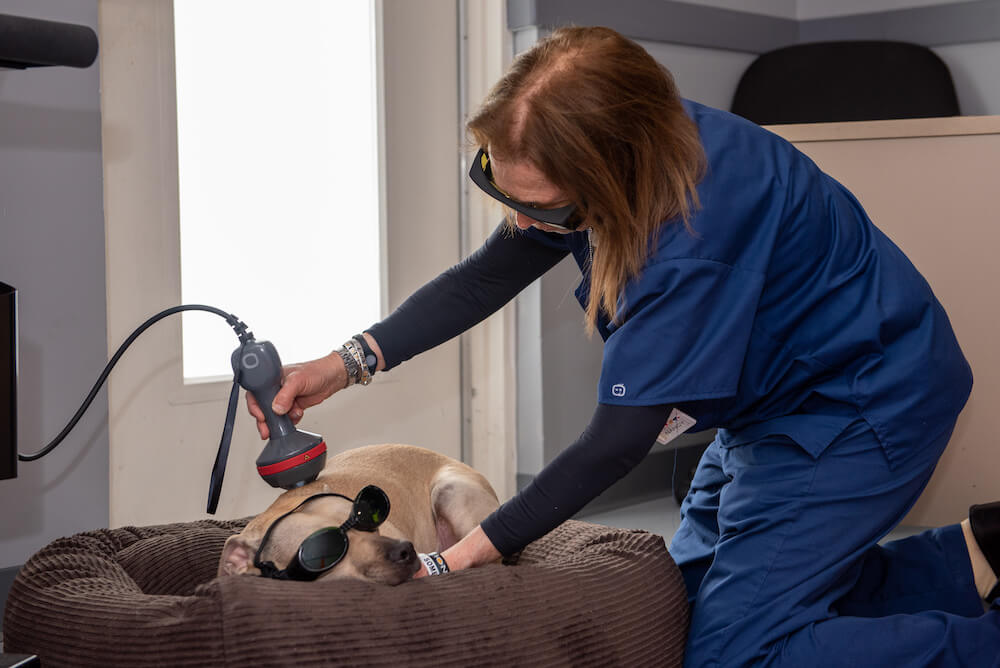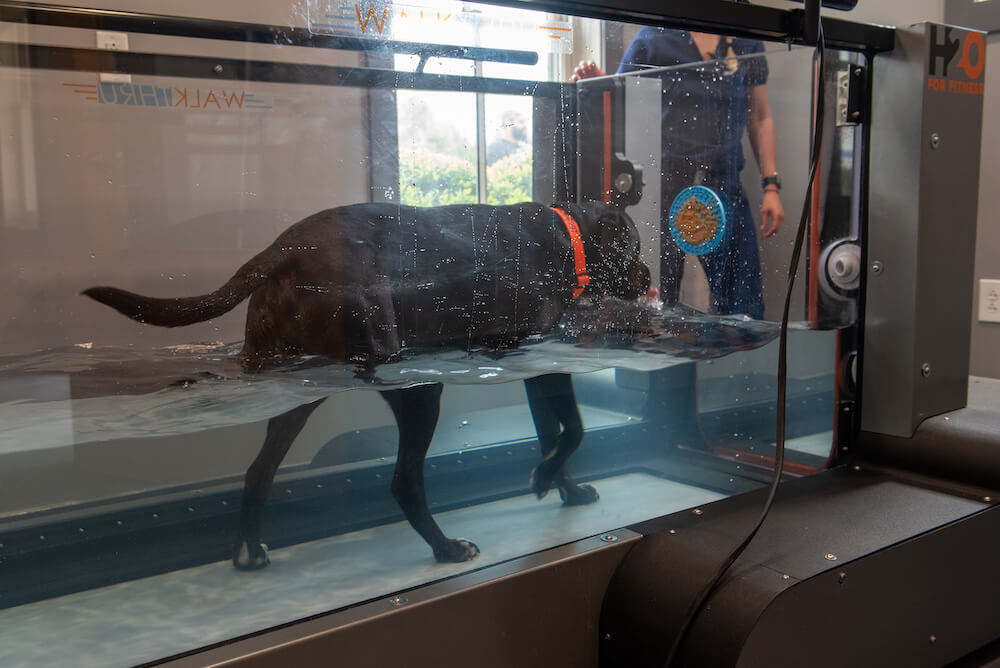 Hickory Veterinary and Specialty Hospital is proud to offer Physical Rehabilitation, one of the fastest growing fields in veterinary medicine. Using similar techniques as human physical therapy, the veterinary world has adapted and modified these methods to benefit our animal companions. Effective pain management combined with physical rehabilitation offers your pet the best chance to regain full strength, mobility and help reduce pain after suffering an injury. In addition, our services can help to reduce pain and immobility in those with chronic problems. Rehabilitation process offers your pet a healthy outlet for his or her mental energy during the healing process and helps to improve their sense of well-being while recovering from injury.
Hickory Veterinary and Specialty Hospital is proud to offer Physical Rehabilitation, one of the fastest growing fields in veterinary medicine. Using similar techniques as human physical therapy, the veterinary world has adapted and modified these methods to benefit our animal companions. Effective pain management combined with physical rehabilitation offers your pet the best chance to regain full strength, mobility and help reduce pain after suffering an injury. In addition, our services can help to reduce pain and immobility in those with chronic problems. Rehabilitation process offers your pet a healthy outlet for his or her mental energy during the healing process and helps to improve their sense of well-being while recovering from injury.
Physical Rehabilitation is indicated for pets with the following conditions:
- “Arthritis” or degenerative joint disease
- Hip dysplasia
- Conservative or post-surgical management of orthopedic problems (ex: cruciate ligament tears, patellar luxations, fracture repairs etc…)
- Muscle injuries or strains
- Tendonitis
- “Herniated discs” or intervertebral disc disease
- Degenerative neurological diseases
- Obesity
- Geriatric support and strengthening
- Poor cardiovascular conditioning
- …and more!
Among our goals is to help your pet return to the level of fitness he or she had prior to injury. In some cases, your pet will be even more fit after rehabilitation! Using the following methods and modalities we will help your pet to regain joint flexibility, strengthen muscles, restore mobility and decrease pain:
 Therapeutic massage
Therapeutic massage- Joint range of motion
- Targeted muscular stretching
- Therapeutic exercises
- Neuromuscular Electrical Stimulation
- LASER (cold therapeutic)
- Land and Underwater treadmill
- Cryotherapy
- Heat therapy
Therapeutic massage is a great way to improve your pet’s sense of well being while providing them healing service. Massage has been shown to increase circulation of blood, increase lymphatic drainage, decrease muscle knots/spasms/trigger points, decreases adhesions and scar tissue and decrease anxiety, stress and pain.
Joint range of motion can be performed passively by the therapist or actively by the pet to encourage the patient to utilize their joint in the entire normal range of flexion, extension, abduction and adduction. This range can be measured with a special device called a goniometer to document improvement in each individual pet. Performing these exercises can also help to move normal joint fluid around the joint, effectively providing nutrition and lubrication to the affected tissue.
Targeted stretching is used to increase flexibility and increase muscle length. Stretching can be very relaxing for your pet and helps to release any tension or stiffness caused by abnormal gait or generalized discomfort. The therapist or owner can perform passive stretching or the animal can be trained to stretch actively.
Therapeutic exercise prescriptions are uniquely created for each individual patient and may include strengthening, spinal mobility, promotion of weight bearing, balancing and proprioception exercises. Props such as trampolines, thera-bands, ankle weights, cavaletti poles, rocker boards and thera-balls are utilized to increase difficulty or intensify resistance as the patient becomes stronger and more familiar with the exercises.
Neuromuscular electrical stimulation (NMES) is application of a low-level electrical current resulting in a muscular contraction. This modality is useful to prevent atrophy or increase muscular strength. NMES can also be very helpful when re-training patients how to walk through muscle re-education.
 LASER therapy uses light energy to stimulate cellular function. Light energy is transformed in the body and assists in tissue healing, pain relief and control of inflammation. This modality is safe in most patients and has no known side effects.
LASER therapy uses light energy to stimulate cellular function. Light energy is transformed in the body and assists in tissue healing, pain relief and control of inflammation. This modality is safe in most patients and has no known side effects.
Land treadmill is used for patients who are not painful but need gait retraining, cardiovascular exercise, endurance training or weight loss. This is not as popular a modality as the underwater treadmill but can be extremely useful and fun for certain patients.
 Underwater treadmill offers low-impact, high-resistance therapy or workouts for rehabilitation from injury, optimal training and conditioning, and weight loss. Underwater treadmills provide the natural properties of water (buoyancy, resistance and hydrostatic pressure) for a workout with reduced impact and stress on joints.
Underwater treadmill offers low-impact, high-resistance therapy or workouts for rehabilitation from injury, optimal training and conditioning, and weight loss. Underwater treadmills provide the natural properties of water (buoyancy, resistance and hydrostatic pressure) for a workout with reduced impact and stress on joints.
Cryotherapy is the application of cold or ice compresses to an affected area with the goal of decreasing inflammation and bleeding as well as providing pain relief. This is typically utilized post-operatively or after an exercise session.
Heat therapy is the application of warm compresses to an affected area. Heat is helpful to increase circulation and decrease pain and is typically utilized in chronic conditions.
Our services can also be adapted for overweight and obese patients. We will create a specialized exercise plan and make dietary adjustments especially for your pet. Our rehabilitation team is available for therapeutic exercise sessions to help your pet achieve his or her weight loss goal.
Rehabilitation services are available by appointment. Please call today to schedule your first appointment.
